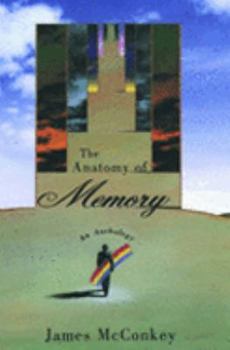The Anatomy of Memory: An Anthology
Select Format
Select Condition 
Book Overview
Memory is astonishing and elusive--its threads intricately woven and infinitely complicated. It makes intelligible the chaos of experience; it feeds our creativity and shapes our daily judgments, our spiritual apprehensions, our desires. It is the essential element of human consciousness, the key to our personality, and the linchpin of our sense of who we are.
In The Anatomy of Memory James McConkey has assembled a rich selection of writings that illuminate the nature of memory and the varied roles it plays in our lives. Ranging from the scientific to the humanistic--from "hardwiring" and the complex functions of the brain, to the value of memory in human life--The Anatomy of Memory brings us insights from some of the most revered writers and thinkers of the past and present. We read of St. Augustine's struggle in Confessions to comprehend his memory; of Jung's theory of the collective unconscious; of Lewis Thomas's understanding in The Lives of the Cell of memory at its most basic level, that of the cell. McConkey includes the poetry of Marianne Moore and William Butler Yeats; and excerpts from works as diverse as James Baldwin's Notes of a Native Son, Vladimir Nabokov's Speak, Memory, and Annie Dillard's Teaching a Stone to Talk. Indeed, each of these writers has turned to memory to make sense of his or her own life, to understand the phenomenal world, and to discover the balance only memory can provide. Not least important are McConkey's own extensive introductions to every piece in the book--gems of insight formed by a lifetime of reflection on writers such as Anton Chekhov, E. B. White, Marcel Proust, E. M. Forster, Virginia Woolf, Sigmund Freud, Maya Angelou, William James, Norman Maclean, Eudora Welty, and many others.
James McConkey is ideally suited to illuminate the nature of memory. His fiction as well as his non-fiction is in effect a lifelong meditation on memory, on the process by which we come to deeper levels of self-understanding through periodic looks backward at the events that have shaped us, a theme he explored most profoundly in his much-praised Court of Memory. Now, in The Anatomy of Memory, he provides a powerful assessment of the ways memory unifies disparate experiences, creates a synthesis out of chaos, and binds together a self, a family, a culture, and indeed all humanity. That assessment is abetted by the unique structure of this anthology, its six sections building on each other, each contributing to a comprehensive understanding of memory's essential role in human life.
In The Anatomy of Memory James McConkey has assembled a rich selection of writings that illuminate the nature of memory and the varied roles it plays in our lives. Ranging from the scientific to the humanistic--from "hardwiring" and the complex functions of the brain, to the value of memory in human life--The Anatomy of Memory brings us insights from some of the most revered writers and thinkers of the past and present. We read of St. Augustine's struggle in Confessions to comprehend his memory; of Jung's theory of the collective unconscious; of Lewis Thomas's understanding in The Lives of the Cell of memory at its most basic level, that of the cell. McConkey includes the poetry of Marianne Moore and William Butler Yeats; and excerpts from works as diverse as James Baldwin's Notes of a Native Son, Vladimir Nabokov's Speak, Memory, and Annie Dillard's Teaching a Stone to Talk. Indeed, each of these writers has turned to memory to make sense of his or her own life, to understand the phenomenal world, and to discover the balance only memory can provide. Not least important are McConkey's own extensive introductions to every piece in the book--gems of insight formed by a lifetime of reflection on writers such as Anton Chekhov, E. B. White, Marcel Proust, E. M. Forster, Virginia Woolf, Sigmund Freud, Maya Angelou, William James, Norman Maclean, Eudora Welty, and many others.
James McConkey is ideally suited to illuminate the nature of memory. His fiction as well as his non-fiction is in effect a lifelong meditation on memory, on the process by which we come to deeper levels of self-understanding through periodic looks backward at the events that have shaped us, a theme he explored most profoundly in his much-praised Court of Memory. Now, in The Anatomy of Memory, he provides a powerful assessment of the ways memory unifies disparate experiences, creates a synthesis out of chaos, and binds together a self, a family, a culture, and indeed all humanity. That assessment is abetted by the unique structure of this anthology, its six sections building on each other, each contributing to a comprehensive understanding of memory's essential role in human life.
Format:Hardcover
Language:English
ISBN:0195078411
ISBN13:9780195078411
Release Date:April 1996
Publisher:Oxford University Press, USA
Length:528 Pages
Weight:1.76 lbs.
Dimensions:1.5" x 5.9" x 8.8"
Customer Reviews
0 rating





